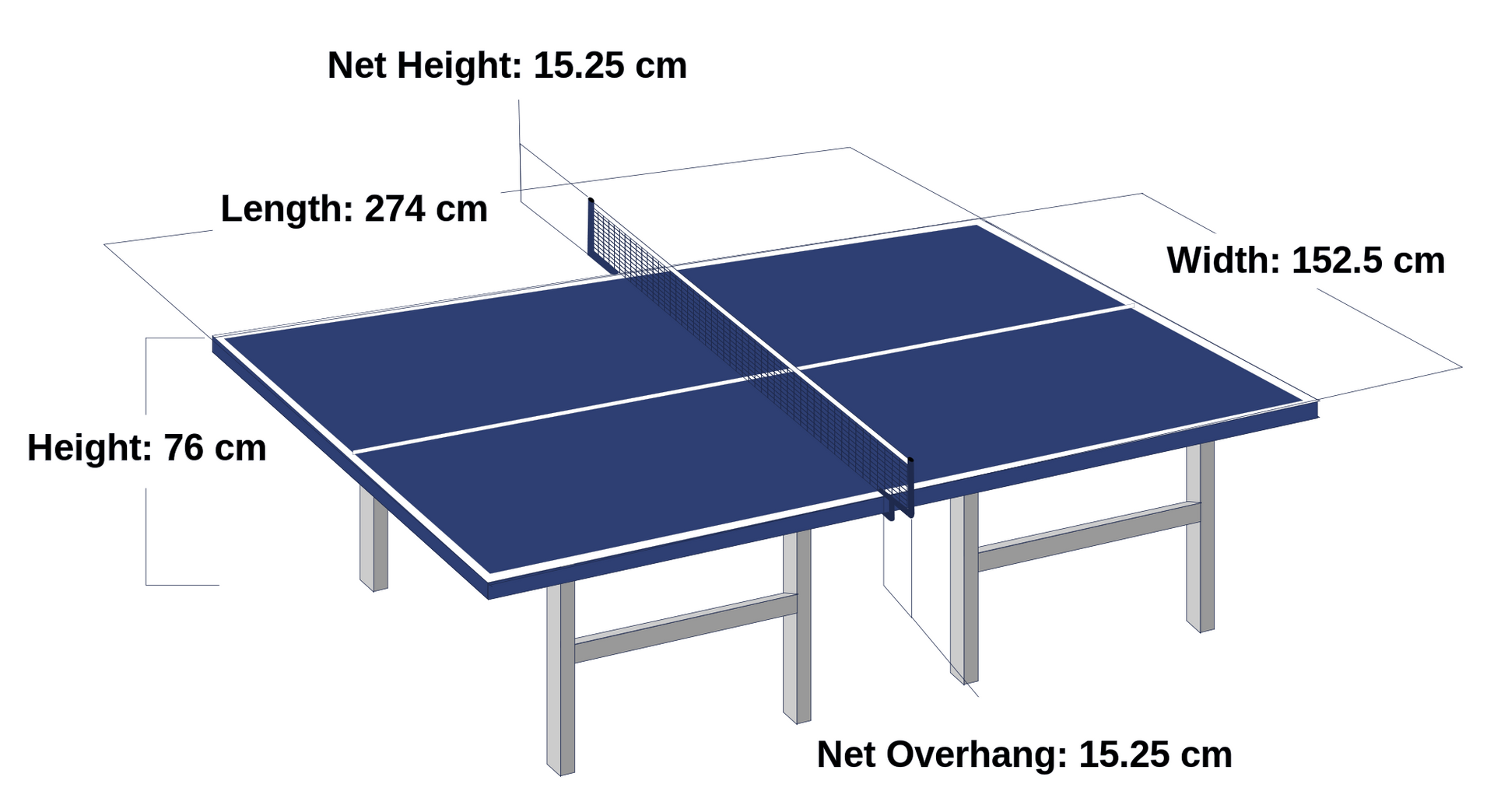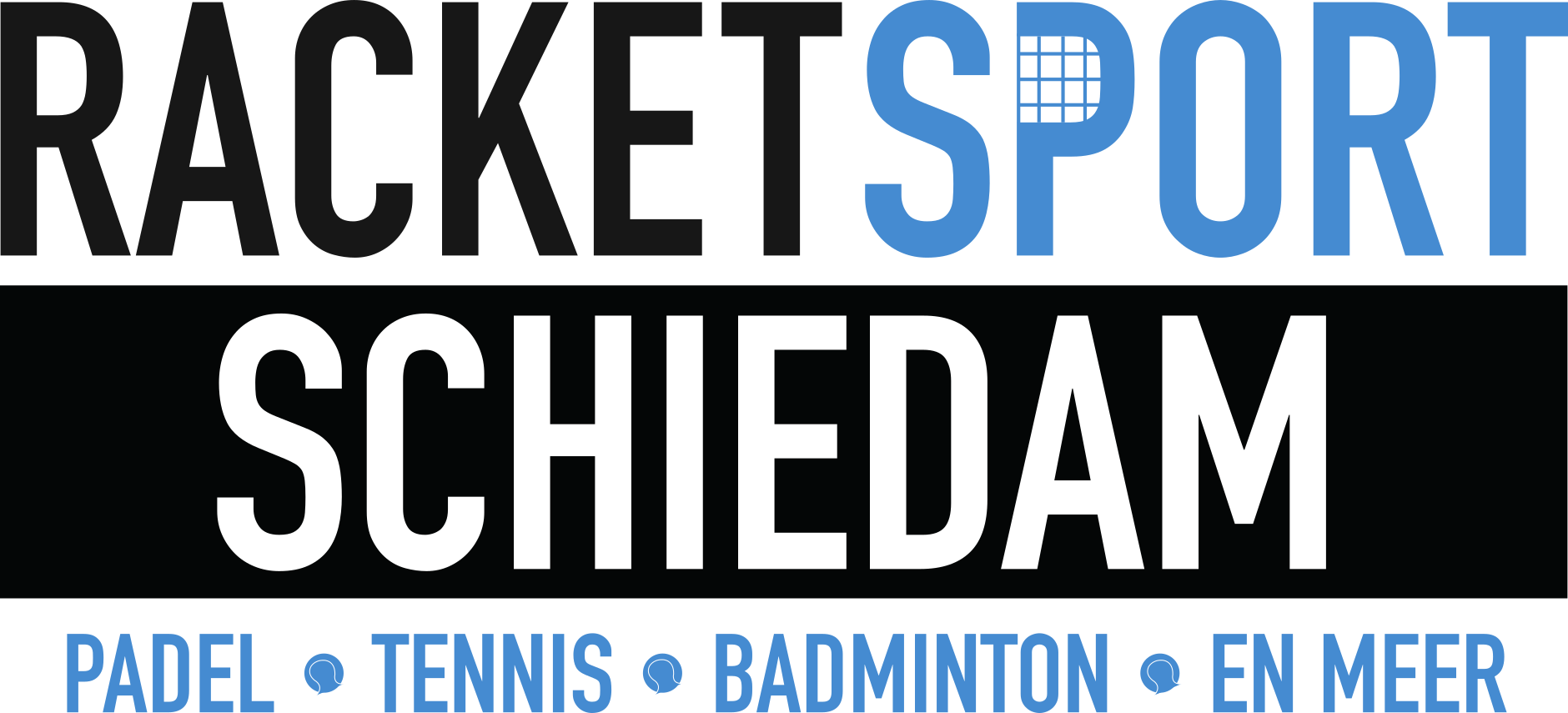Table tennis
What is Table Tennis?
Table tennis is a sport in which two or four players hit a light and hollow ball with a bat back and forth across a table with a net in the middle. The aim of this game is to hit the ball over the net onto the opponent's half of the table in such a way that the opponent cannot return the ball correctly or at all.
The table tennis table
Because table tennis is originally an English sport, the exact dimensions are determined in feet and inches. The official size of a table tennis table is 9 feet long (274cm), 5 feet wide (152.5cm) and 2 feet and 6 inches high (76cm). The length x width x height in millimeters is therefore: 274 x 152.5 x 76mm.
The table top must be made of a dark uniform material, which should not reflect. In practice, most tables are dark green or blue.

History
The history of table tennis can only be seen in connection with other sports, especially tennis, of which certain forms have existed since the Middle Ages. Like many sports, table tennis started as a social event; it was probably first played – with improvised equipment – sometime in the late 19th century in England. Some sources claim that it was first played by British soldiers in India or South Africa and then taken to England.
In England, a patent was granted in 1884 for the name "Miniature-Indoor-Tennis-Game". In 1901, the English table tennis enthusiast James Gibb discovered celluloid balls during a trip to the United States, which replaced the light, but very hard canvas ball that had been customary until then. This gave the game a new, more sporty accent.
By 1900, the game was known by its current names (table tennis and "ping pong"). The word "ping-pong" is an onomatopoeia of the sound when the ball and bat touch each other from English (ping-pong). The word was registered as a brand name in Great Britain and the United States at the beginning of the 20th century, after which the relevant manufacturers encouraged table tennis players to use the word table tennis for the game itself, to prevent "ping-pong" from failing as a generic term. would lose recognition as a brand. In England there was even a Table Tennis Association and a Ping Pong Association running side by side for a while.
In 1926, the International Table Tennis Federation (ITTF) was founded in Berlin, with Denmark, Germany, England, Hungary, India, Austria, Czechoslovakia, Wales and Sweden as members. The United States also became a member later that year.
In the Netherlands, the production of table tennis tables started in 1939 by Heemskerks Scheepsbouw en Timmerbedryf from Roelofarendsveen, founded by the Heemskerk brothers. Nico and Wout, both former table tennis champions from the Netherlands, were first involved in making boats. After they had produced their first tennis table on behalf of a local table tennis club, due to their dexterity with wood, demand also came from outside Roelofarendsveen. In 1962, a factory building specifically for sporting goods was moved in and production increased partly due to the increasing number of foreign partners. During the recession in the 1970s, Heemskerk was the only one of four Dutch table tennis table manufacturers to survive and production is still carried out from the factory in Alphen aan den Rijn.
In the 1950s the game changed drastically due to the use of rubbers with an underlying sponge on the bats. The rubbers with sponge provided more spin and speed. The rubbers with sponge were introduced by the British sports manufacturer SW Hancock Ltd. The introduction of instant glue in the mid-80s once again added more spin and speed to the game. In 1988, table tennis was added to the Olympic Games.
What do you need for table tennis?
For table tennis, in addition to a table with a net of the correct dimensions, you also need bats and balls.
BatEvery player has a wooden bat (usually called a bat in Belgium) that serves as a bat. Size, shape and weight are not limited. The bat is generally covered with rubber on both sides (red or black), to give the ball an effect (spin). By the way, some players, especially Asian ones, who usually hold the bat with a pen holder grip, prefer only one rubber. However, the other side must be colored in the color of the rubber.
Bal
A match ball must have a diameter of 40 millimeters and a weight of 2.7 grams and must also be perfectly round. The ball must not be shiny and must be made of plastic. Before January 1, 2016, this material was celluloid. The jump height must be a minimum of 23 and a maximum of 25 centimeters at a height of 30 centimeters. The ball can have different colors but must be single-colored. The most common are white, yellow and orange. In the past, the diameter of the ball was 38 millimeters, but this was enlarged after the 2000 Summer Olympics to slow down the pace of the game slightly and reduce the spin effect slightly, thus making the sport more attractive (easier to follow, longer rallies) for the spectators.
What are the rules of table tennis?
Bulletin
For a good serve (serve), the ball should lie motionless on the open and flat palm, after which it should be thrown upwards as straight as possible at least 16 cm.
After the ball has reached the highest point, it must be hit in such a way that it first touches the own playing court, passes over or next to the net without touching it, and then touches the opponent's playing surface. Unlike tennis, service does not need to take into account where the ball bounces first (own half of the table) and where it subsequently lands. The ball may therefore be served diagonally or parallel. If the ball hits the net and lands correctly, the service must be repeated. If a serve does not reach the other side of the table correctly, a point is immediately awarded to the opponent, without a second chance. Serves must be made from behind (the extension of the) end line and the opponent's view of the ball must not be blocked during the serve.
Whenever two points are scored in a set, the service changes players (or teams).
Game of set
The player who first scores 11 points wins the game (in Belgium it is called a set), provided the difference with the opponent is at least 2 points. If the score is tied at 10-10, play continues until one of the two players still has two points more than the other (for example 12-10, 13-11, 14-12...). In this phase, players switch serves after each point. Until 2001, a game was about 21 points won and service was changed every 5 points. At the end of each game, the players switch sides. Whoever served first in the previous game will now receive first. Typically, play continues until a player has won three or sometimes four games, depending on the level of the competition. In the last game (fifth in best-of-five, seventh in best-of-seven, also called "belle") the court changes sides again when a player has achieved five points.
Until the introduction of the 11-point system, major tournaments were played individually for three games won ("Best-of-Five") and as a team for two games won ("Best-of-Three"). After the introduction of the 11-point system, major tournaments are played at individual level for four games won ("Best-of-Seven") and as a team for three games won ("Best-of-Five").
Double
Table tennis can also be played as doubles or mixed doubles. In doubles, the players must take turns hitting (not like in tennis where the players have a choice) and after determining the first server and first receiver, the service/reception order is fixed (receiving twice, then serving twice, then the fellow player). In a doubles game, serve diagonally (-to the left) from the right half of the table. After each game, not only the first server changes, but also the receiver. (Suppose players A B play against X Y and A served to player X in the previous game, then he now serves to player Y). In a possible 5th or 7th game, both teams switch sides again. The player who would normally serve remains on serve, but the receivers change. When a team or player reaches 5 points, both players or both teams switch sides. (If normally player X was to receive, player Y now receives.)
More information about table tennis? Click on the link below.
https://tafeltennis.nl

